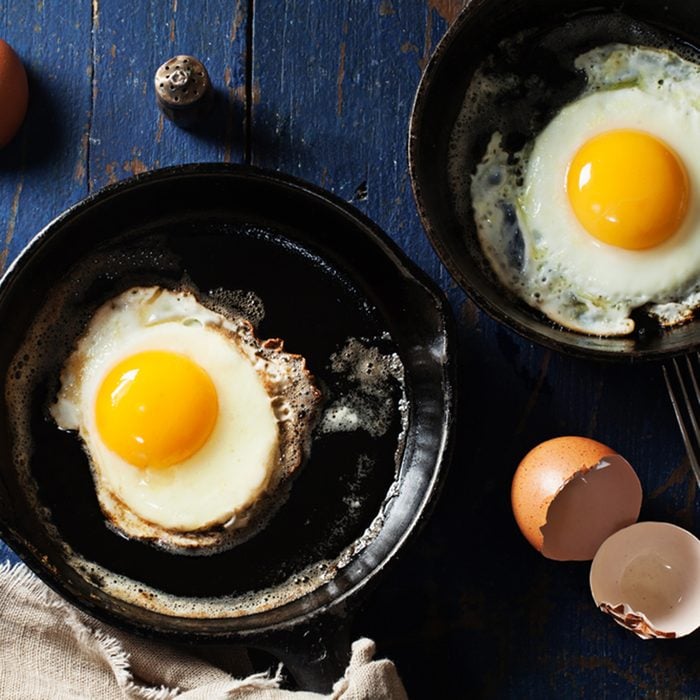
The cast-iron skillet is the workhorse of many a dedicated home cook, and for good reason. Constructed in one seamless piece of metal, it’s virtually indestructible, conducts heat extremely efficiently and, when seasoned properly, has a nonstick surface that even fried eggs will slip right off of. There’s almost nothing a cast iron skillet can’t do—just look at these amazing one pan meals—but you have to treat your pan right. Learn what the most common cast iron mistakes are and how to fix them.
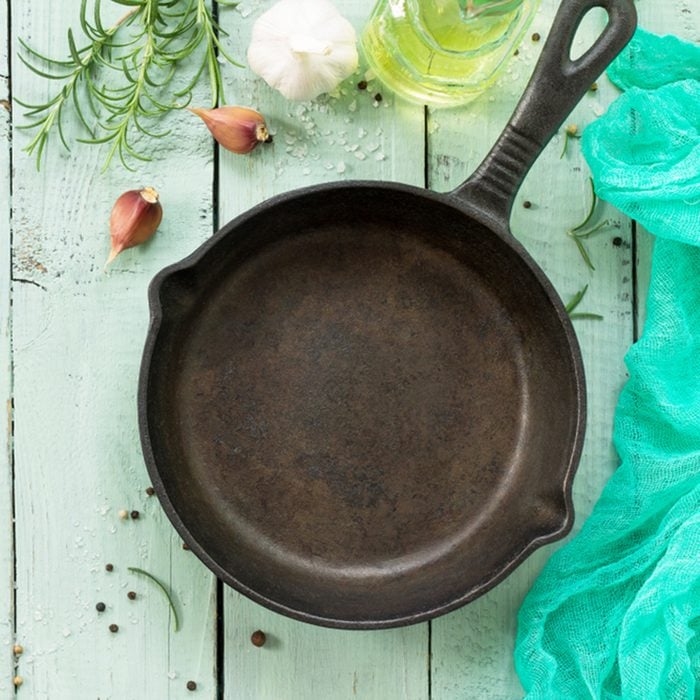
You don’t understand seasoning
You know all that talk about “seasoning” a cast-iron skillet? It’s not just talk. Seasoning refers to a layer of polymerized oil that has been baked onto the surface. Seasoning makes your skillet release food easily, clean up quickly and remain stain- and rust-free. Some cast-iron skillets, including those made by Lodge, come pre-seasoned. You’ll notice they have a smooth, non-greasy, softly lacquered surface. Those that don’t come pre-seasonsed have a matte gray finish—until you season them, at which point they become shiny and closer to black in color. However, even if your skillet comes pre-seasoned, for best results right out of the box, consider seasoning it yourself before you use it.
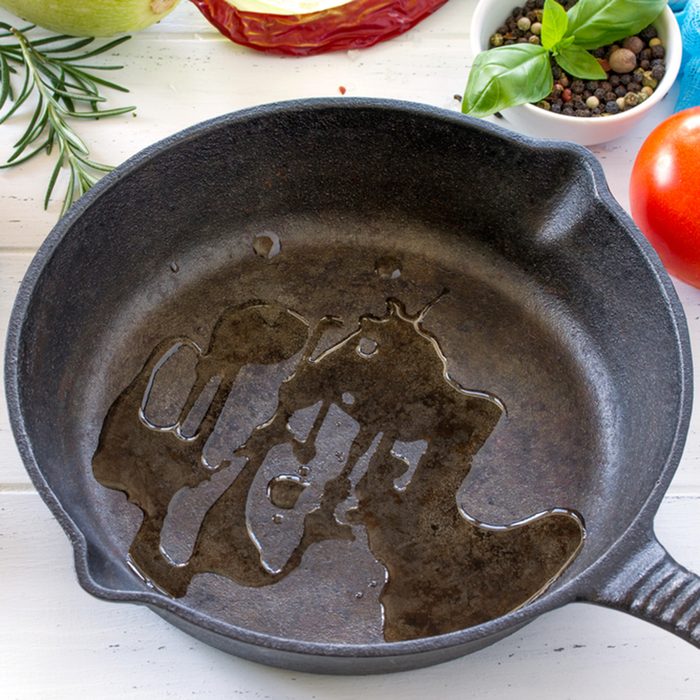
You’re not seasoning the skillet right
If you’re just swiping a layer of oil onto the surface of your skillet, you’re not seasoning your cast-iron correctly. Seasoning involves a chemical reaction made possible through heat. In a nutshell, here is how to season your cast-iron skillet:
- Apply a thin coat of any kind of vegetable oil to the entire pan (inside and outside and the handle too)
- Place the pan inverted in an oven preheated to 350 degrees for an hour
- Turn off oven and allow pan to cool inside the oven.
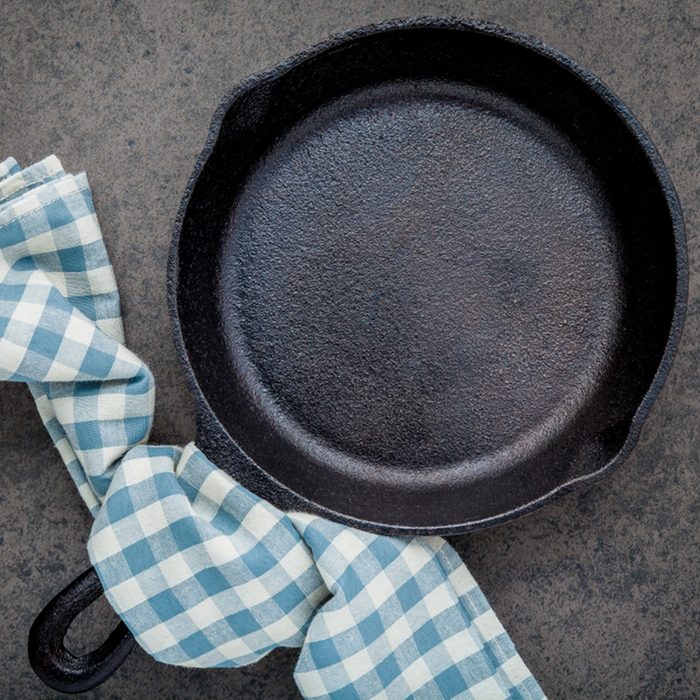
You’re not cleaning it correctly
In a nutshell, this is how to clean your cast-iron skillet:
- Immediately after cooking, rinse in warm water, sprinkle with a bit of baking soda, and scrub gently with a nylon brush. The baking soda neutralizes any flavors and odors from what you’ve just cooked, and has anti-bacterial properties.
- Since water will cause cast-iron to rust, don’t soak your skillet (thanks to seasoning, you shouldn’t need to), and be sure to thoroughly dry it with a dishtowel.
- To help maintain the existing seasoning for as long as possible, apply a thin coating of vegetable oil while the pan is still warm.
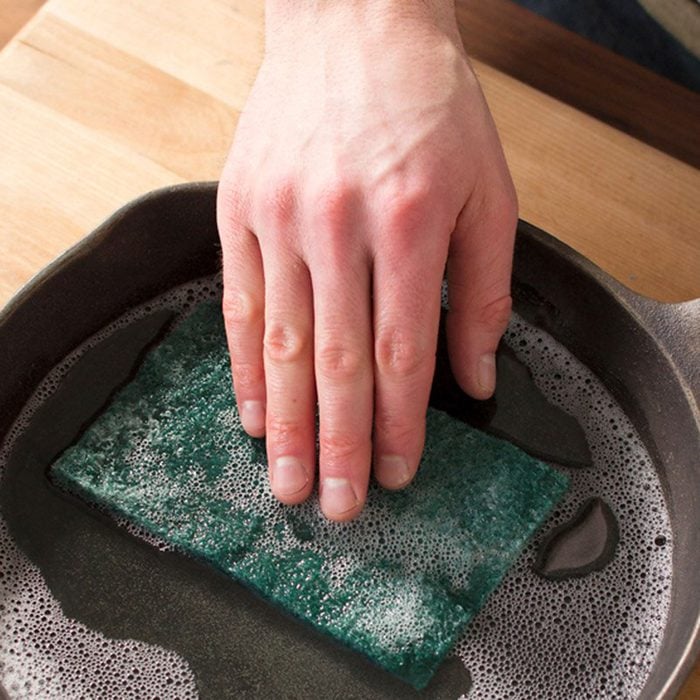
You never use soap
Think your cast-iron skillet is a delicate flower that can’t handle soap? Wrong! Cast iron can take almost anything you throw at it, even a little dish soap. Yes, if you take care of your skillet perfectly, you might never need to suds the skillet up. We all make mistakes, though, so sometimes you might need some soap to really clean the skillet well or to help you if it gets rusted.
Got a rusty skillet? Learn how to get it looking like new again.
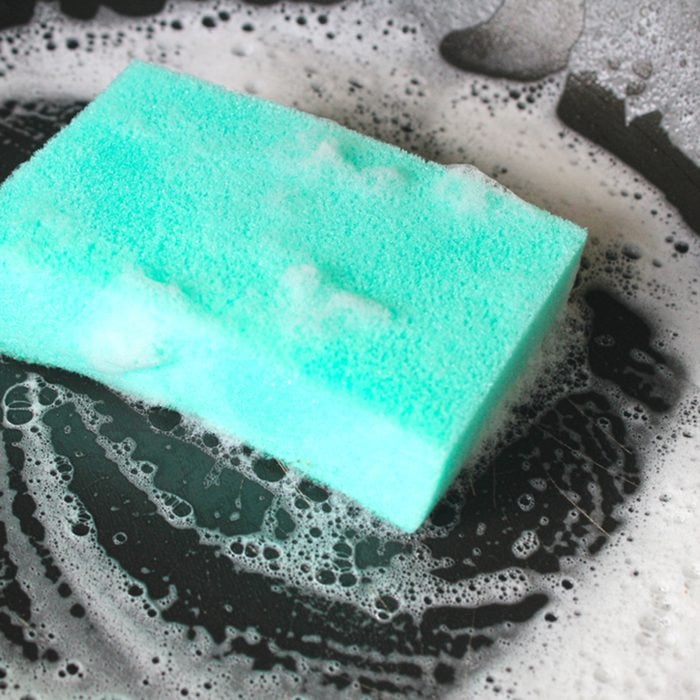
You use harsh chemicals
While soap can be used on cast iron sparingly, there is no need for any harsh chemicals to clean your skillet—even if it’s rusted. Skip the oven cleaner, skip the scouring powder and just rely on baking soda, a towel and, if need be, mild dish soap.

You’re not re-seasoning
Season a cast-iron skillet once, and you’ve got a kitchen workhorse…for a while. Season a cast-iron skillet regularly, and you’ve got a kitchen workhorse for a lifetime. Every time you use your cast-iron skillet, you’re wearing some of the seasoning down, and eventually it won’t function as well. So season it again whenever you see dull spots. Or do what I do: season it whenever it’s out and your oven is on.
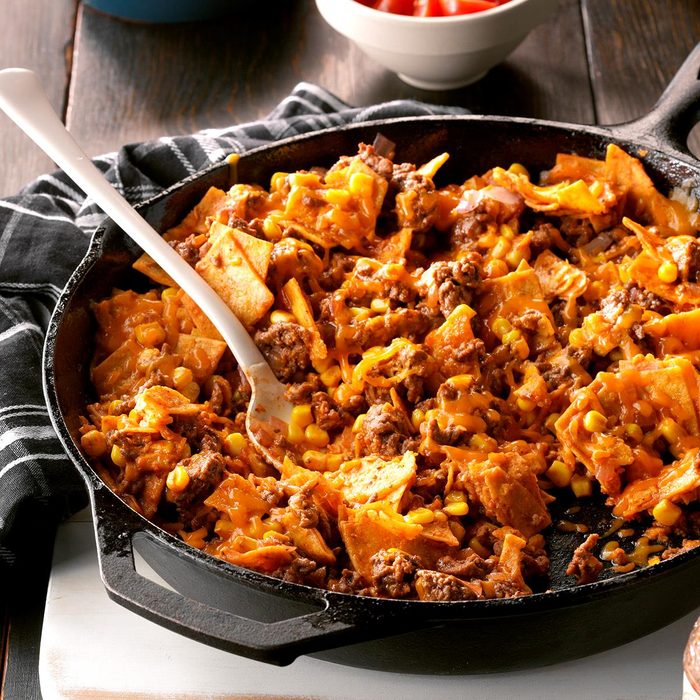
You’re not doing enough cast-iron cooking
While seasoning does wear down with use, the more you use your cast-iron cookware, the better it performs. Every time you use it, you’re also adding new molecules of polymerized oil. Over the long haul, your cast-iron will darken and grow shinier.
Start cooking more with some of these vintage cast iron recipes.

You get scared off by a bit of rust
One day, you will take your cast-iron skillet out of the cupboard, and there will be a spot of rust on it. Yes, it happens even to the most careful cast-iron caretakers. But don’t worry; it’s not fatal to your cookware. Simply eliminate it any way you can, even if it means taking steel wool to it. Just be sure to wash and re-season before you use it again. Here are some more tips on dealing with, and preventing, rust.
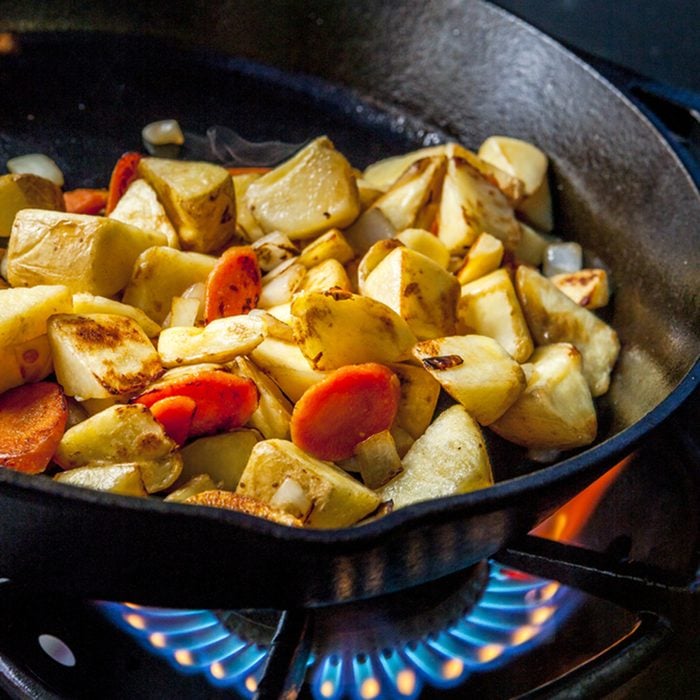
You’re not preheating
Cast-iron performs best when heated gradually, so give it a few minutes to pre-heat before adding your food.
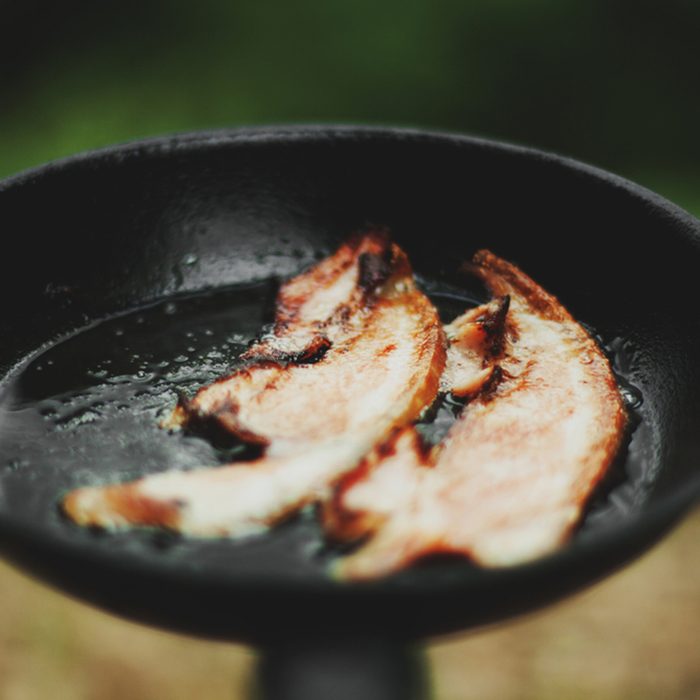
You’re overheating
Because cast-iron is so efficient at conducting heat, it can get hotter than what you may be used to with other cookware. So start with a lower heat setting as you get used to how incredibly efficient your cast iron skillet actually is. And if it gets too hot (you’ll know, but one sign is that it’s smoking), turn off the heat, let it cool down a bit, and then get back to cooking.
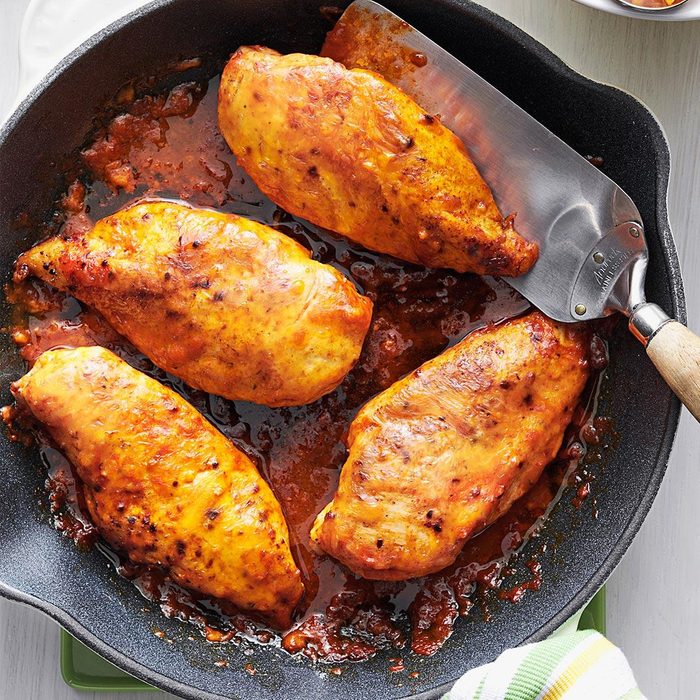
You’re using the wrong spatula
Technically, you can use any spatula (and any tool) on a cast-iron skillet. However, metal spatulas provide the best results, especially when cooking delicate food such as eggs. Delicate food? Sturdy spatula.
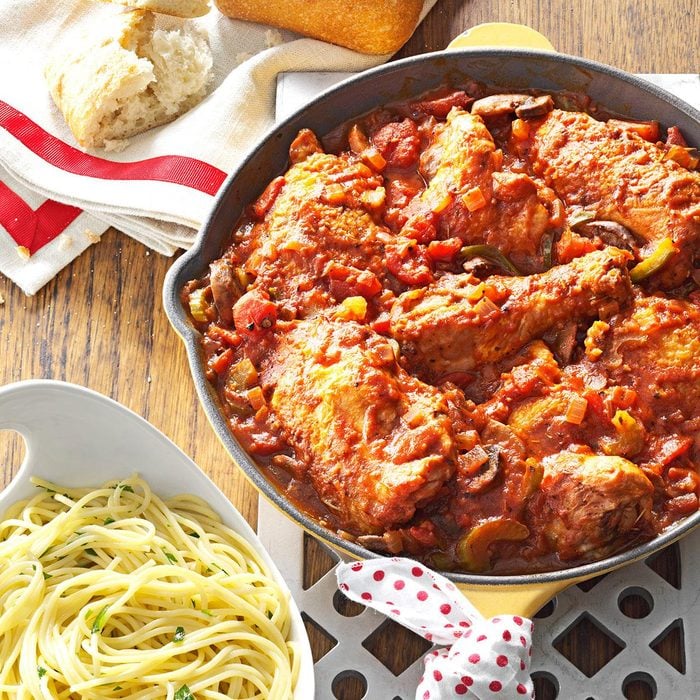
You believe the myth that you can’t cook acidic foods (like tomato sauce)
It’s a total myth that you can’t cook acidic foods in your cast iron skillet. Some are under the impression that acidic foods can discolor cast-iron, but a baking soda scrub should eliminate any discoloring. Some people think that acidic foods cause iron molecules to leach out into your food, but that’s actually a good thing! Cast-iron cooking can add significant amounts of iron to your food and into your body.
So go ahead and try this chicken cacciatore recipe, which we affirmatively recommend that you cook in cast-iron.
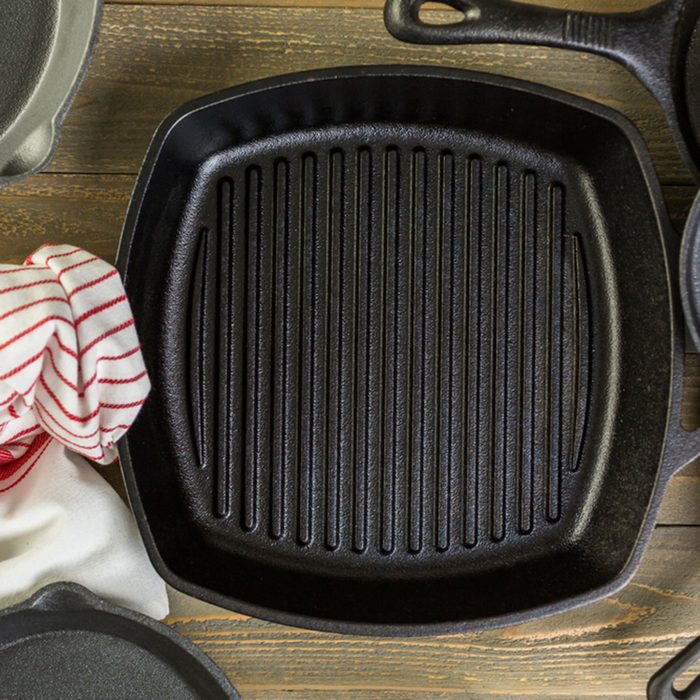
You don’t realize how forgiving it is
So maybe as you’re reading this, you’re thinking about that cast-iron skillet you haven’t taken the best care of. Maybe you’ve made every single one of the mistakes listed above. That’s okay! Just scrub it down, re-season it, and start using it again. Cast-iron is forgiving like that. That’s why it will last forever…or at least until Thanksgiving…when you can try all of these holiday recipes tailor-made for your favorite skillet.
Note: Every product is independently selected by our editors. If you buy something through our links, we may earn an affiliate commission.